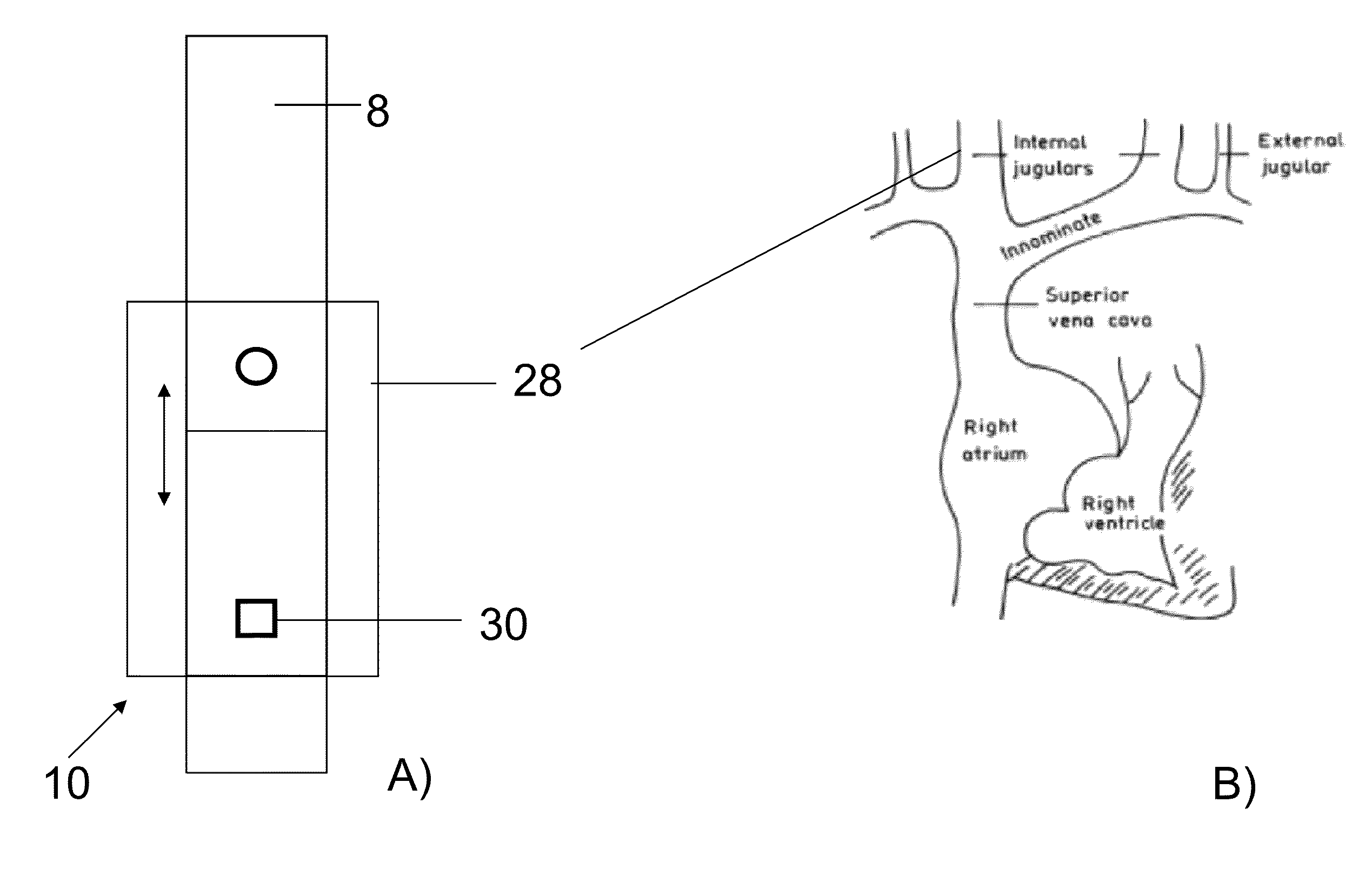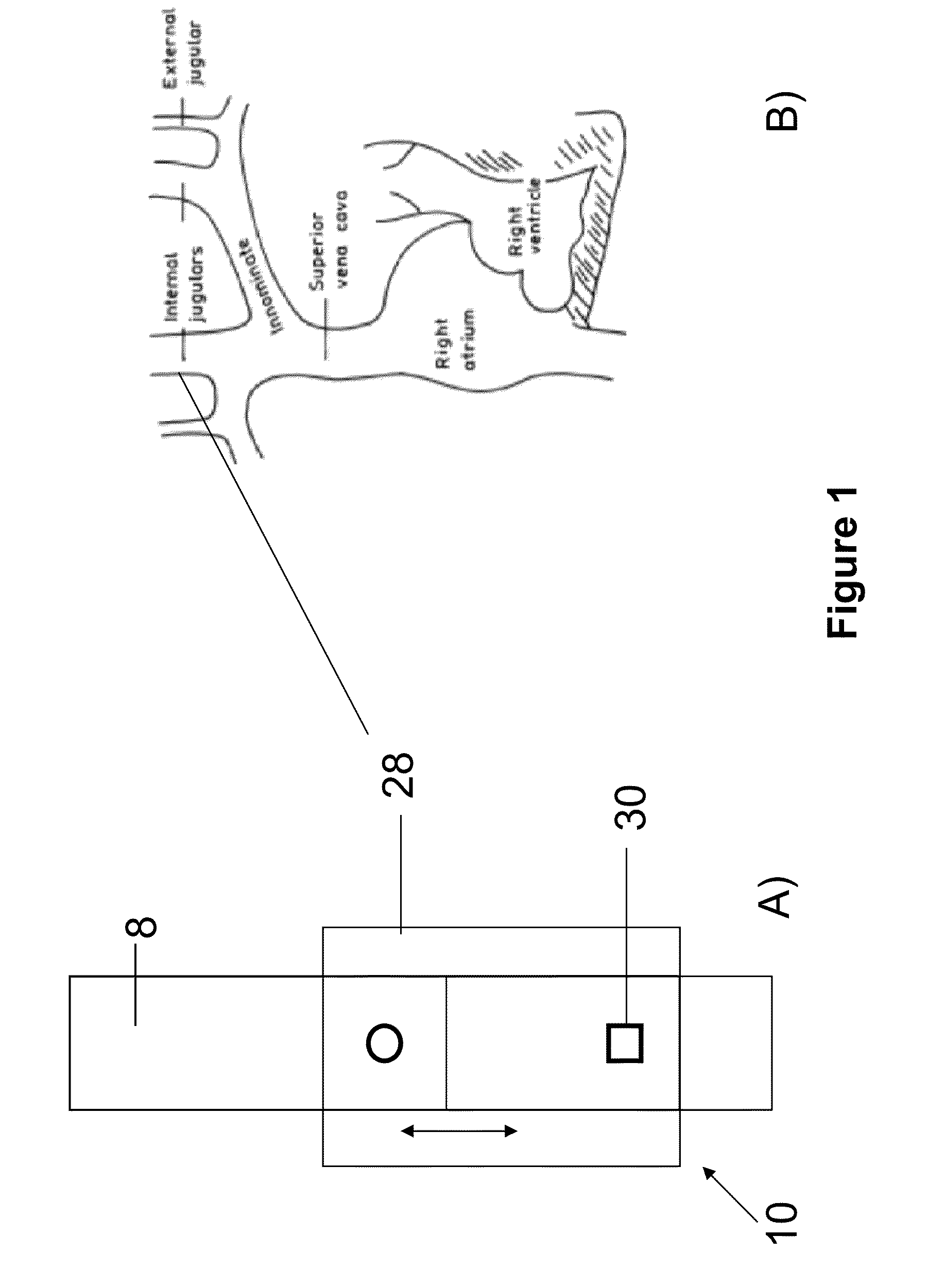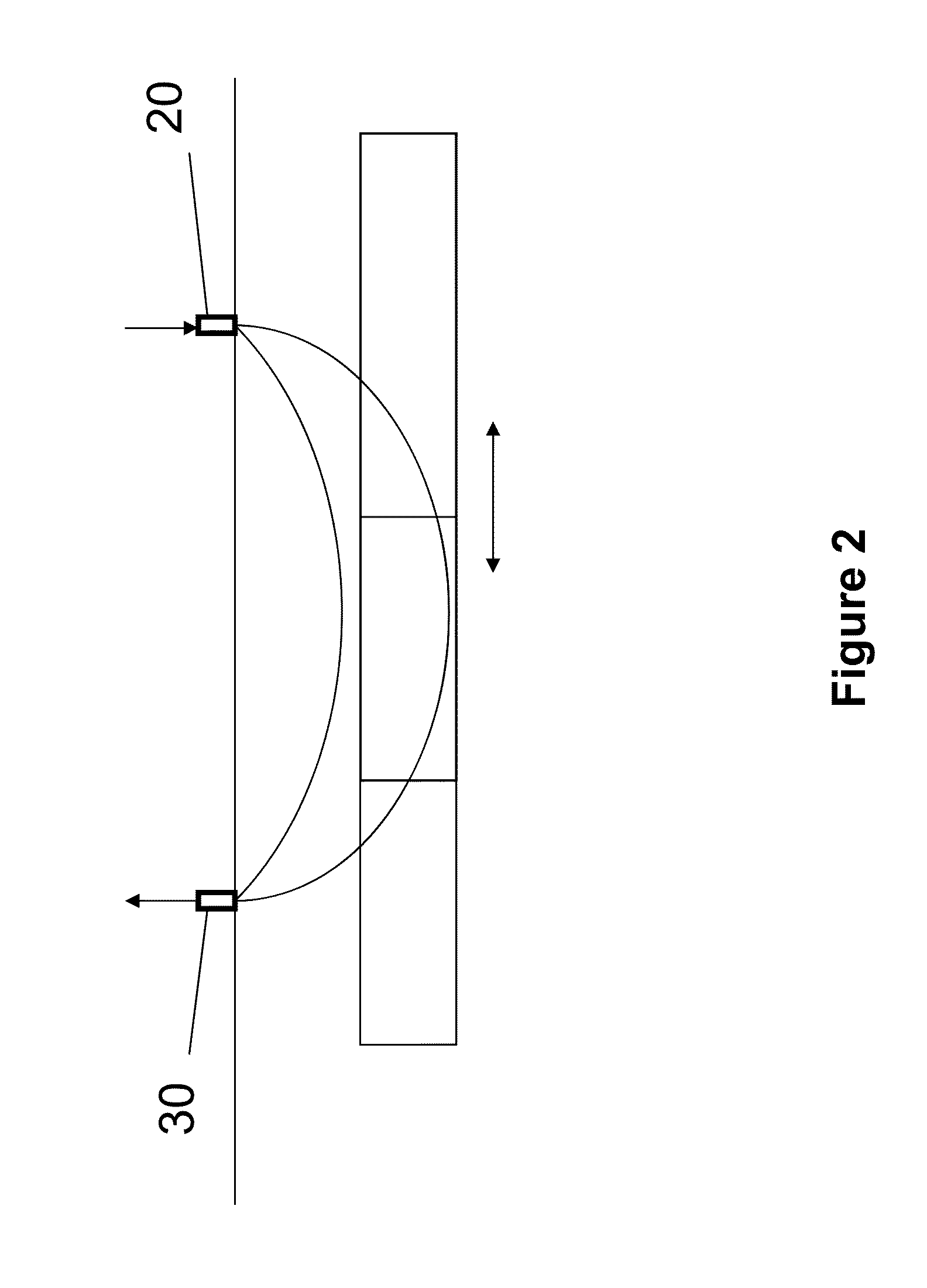Method and device for measuring parameters of cardiac function
a technology of cardiac function and measurement method, which is applied in the field of monitoring vital functions of the human body, can solve the problems of increased blood volume, difficulty in using methods by physicians, and obstruction of the vena cava, and achieve the effect of facilitating light delivery
- Summary
- Abstract
- Description
- Claims
- Application Information
AI Technical Summary
Benefits of technology
Problems solved by technology
Method used
Image
Examples
example 1
Measurement of Venous Pulse in a Patient
[0124]The venous pulse of a human subject was obtained using a device as shown in FIG. 1. The patient lay on a chair at about a 30 degree recline. The sensor patch of the device was placed on the neck of the patient at a site over the internal jugular vein. While the subject maintained normal breathing, venous pulse was measured and recorded. FIG. 12 illustrates the waveform recorded. The amplitude of the detected signal is represented along the y-axis while the x-axis represents time.
example 2
Measurement of Central Venous Pressure in a Patient
[0125]The central venous pressure of a human subject was obtained using a device as shown in FIG. 13. The sensor patch of the device was placed on the neck of the patient at a site over the internal jugular vein such that the terminal source / detector of the device was at the sternal angle of the subject. While the subject maintained normal breathing, venous pressure was measured and recorded as a function of body position when the patient was lying flat (0 degree incline, e.g. horizontal), at a partial rise (45 degree incline from the horizontal) and sitting upright (90 degree incline from the horizontal) as shown in FIG. 15A. The measured pressure as depicted by the waveform illustrated in FIG. 15B is consistent with the expected central venous pressure in a healthy subject which decreases as body position rises from the horizontal position.
example 3
Use of a Device with Pressure Sensor to Measure Patient CVP
[0126]A simulated patient system was developed to test a height sensor device 360 as shown in FIG. 18. The simulation (as shown in FIG. 19) included a cylindrical tissue phantom representing the patient's neck in which a tube 410 representing the jugular vein was embedded. A corresponding tube 412, joined at a T-junction to the jugular vein tube 410, represented a CVP catheter and was used to illustrate the height of fluid in the jugular vein. The fluid used in the system was water. A single tube extended downwardly from the T-junction and connected to a rubber “heart”. The heart is connected to a rotation pump which accurately simulates heart beats within the heart and pumps water through the system.
[0127]An optical sensor device with LED and photo detectors 328 (as in FIG. 13) was placed on the surface of the tissue phantom at a position that was over the simulated “jugular vein”. A pressure sensor 350 was placed on top of...
PUM
 Login to View More
Login to View More Abstract
Description
Claims
Application Information
 Login to View More
Login to View More - R&D
- Intellectual Property
- Life Sciences
- Materials
- Tech Scout
- Unparalleled Data Quality
- Higher Quality Content
- 60% Fewer Hallucinations
Browse by: Latest US Patents, China's latest patents, Technical Efficacy Thesaurus, Application Domain, Technology Topic, Popular Technical Reports.
© 2025 PatSnap. All rights reserved.Legal|Privacy policy|Modern Slavery Act Transparency Statement|Sitemap|About US| Contact US: help@patsnap.com



